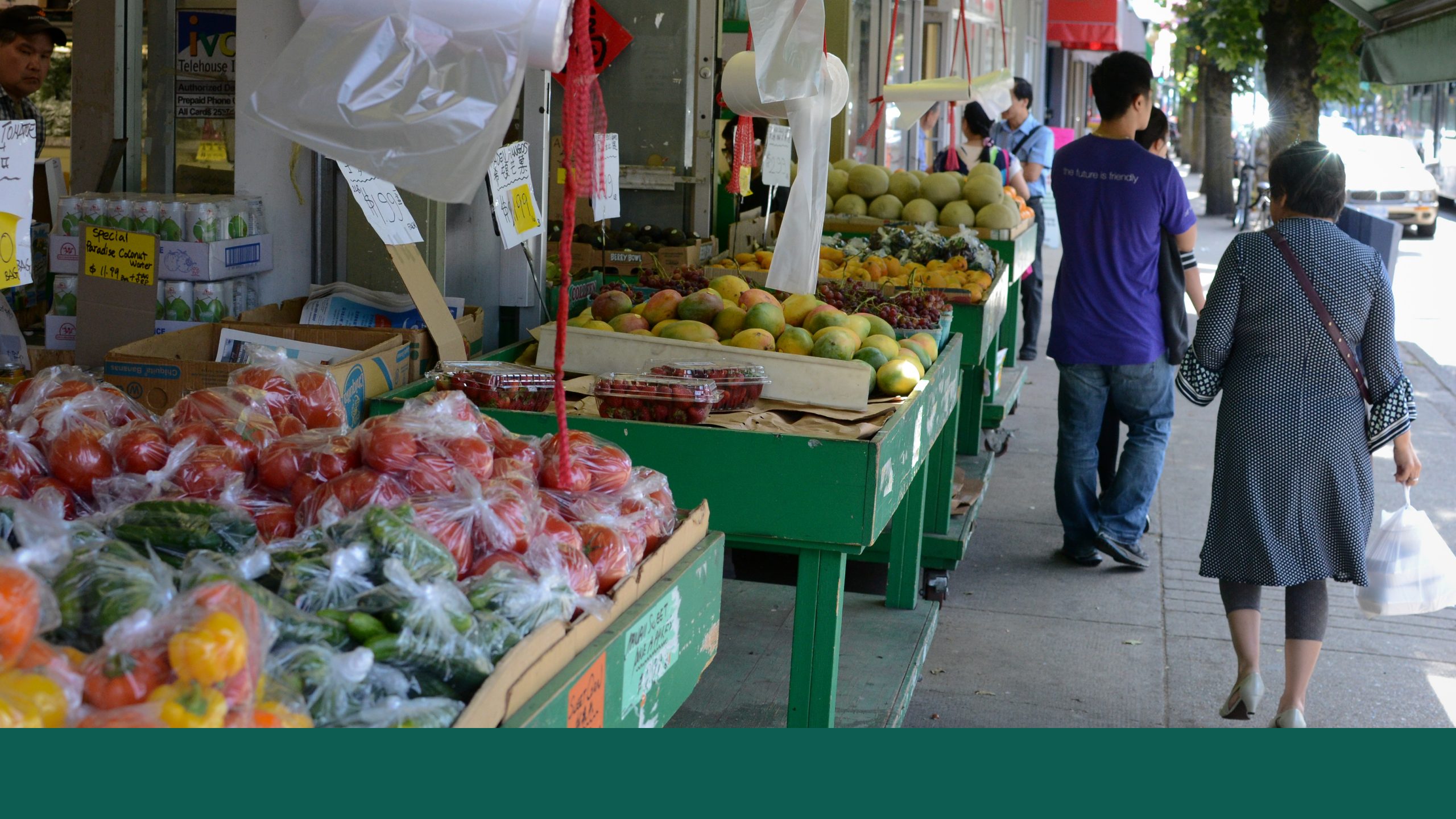11. Food Systems
Our Vision: Vancouver’s resilient food system supports people, the environment and the economy. Residents have equitable access to food and food-related spaces and infrastructure.

Access to food is a basic human right and defining element of day-to-day life. Food systems, which include the infrastructure and processes needed for food production, processing, distribution, sales and waste management, are a key element of city building. Food plays a powerful role in connecting people to each other, their cultures, and the land and water. Food can be leveraged to build resilience, improve equity, support human and economic health outcomes, and reduce environmental impacts.
Directions and Policies

Direction 11.1: Equitable and Resilient Food System
Support the development of an equitable and resilient food system.
Utilize a holistic approach to sustain and grow food supply chains and community-based food initiatives in an equitable and resilient way. This involves working with partners, creating spaces to celebrate, grow and share food, increasing access to food and supporting a circular food economy.
Policies
| 11.1.1 | Improve food access across the city by supporting food-related retail and services (e.g., grocery stores, food banks, farmers markets, restaurants) and by expanding commercial-retail opportunities in more neighbourhoods. Include consideration for culturally appropriate options where possible. |
| 11.1.2 | Secure additional space, reduce barriers, and create incentives for food and medicine gardens, urban farms and harvesting to advance Reconciliation, increase opportunities for local food production, and build connection to land and waters. |
| 11.1.3 | Support and strengthen Vancouver’s food supply chains (such as food wholesale, retail, and manufacturing uses, food hubs, farmers markets, and urban farms) and address displacement of these critical food assets. |
| 11.1.4 | Leverage new development and/or community infrastructure to ensure integration of community food assets such as sites for cultural celebration, neighbourhood food storage, growing, harvesting, programming, and sheltered picnicking facilities. |
| 11.1.5 | Address climate change, biodiversity, water systems, and waste management through food system interventions (e.g., allocate corridors to urban farming, to enhance biodiversity). |
Food assets are places where people can grow, prepare, share, buy, receive or learn about food. There are two broad categories:
- The food supply chain (e.g., urban farms, food wholesale, retail, and manufacturing infrastructure)
- Community resources (e.g., urban agriculture and harvesting spaces, community kitchens, and locations for food sharing and celebration)

